Crescent Monsters
Colony creatures
Water creatures (hydroskeletal)
Mollusks
Beasts (mammals)
Saurs (dinusaurs and birds)
Glass creatures (silicate)
Milk creatures (organoaluminum)
Magic creatures
Plants
Colony creatures
Colony creatures have gained access to the land by conquering the sky. They are made of tough membranes surrounding gas sacks, and are highly electrically charged. Only one sentient species has arisen from this branch.
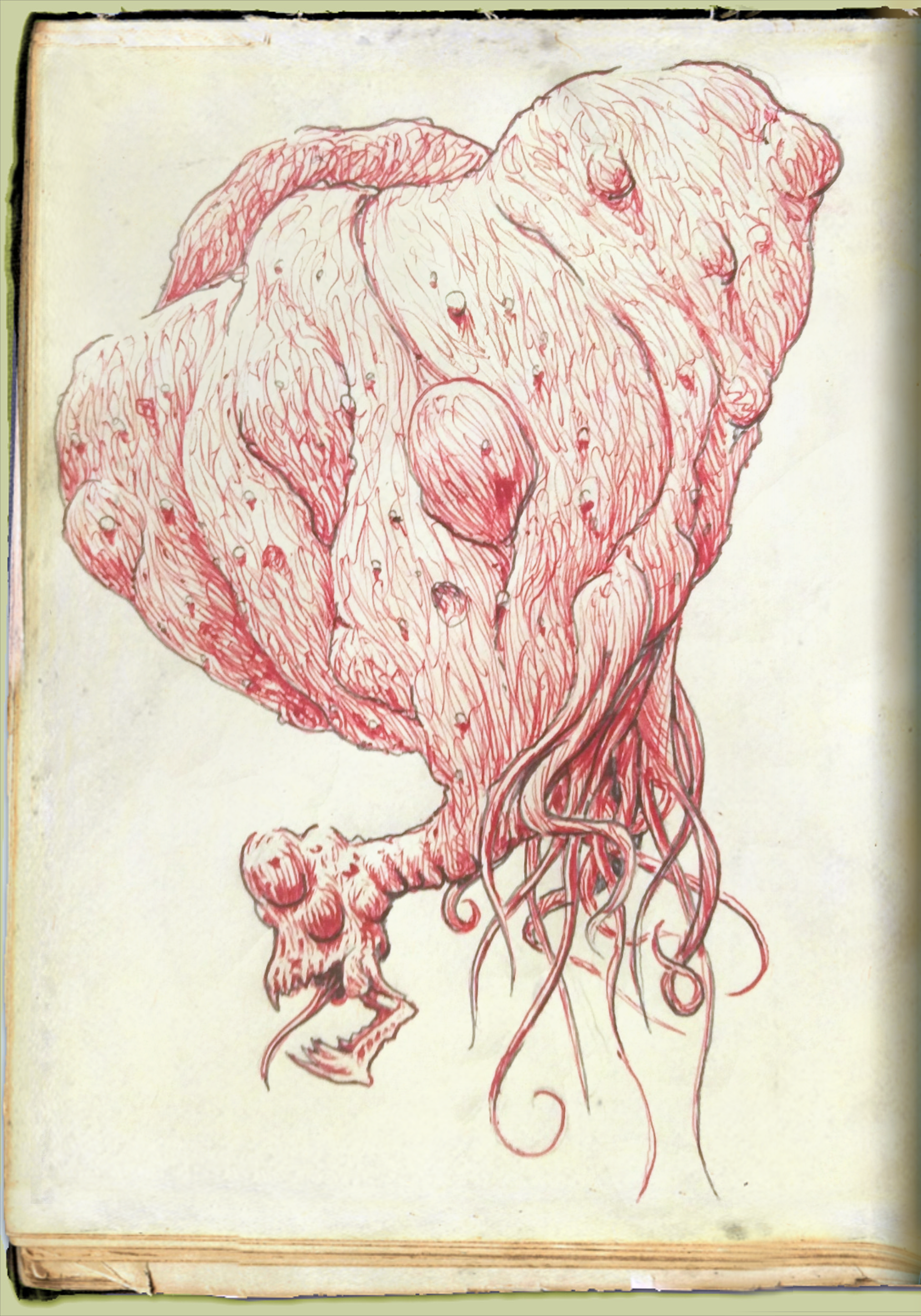
Gasbags
Gasbags are exactly that, with tentacles and glass like teeth. They could theoretically be killed by fire arrows, from a significant distance, near a body of water, when prepared to suffer burns. Theories abound as to the merits of heaving heavy objects into them from above. Practical attempts along this line find few volunteers. Luckily they eat little and rarely, so usually few lives are lost when they attack.
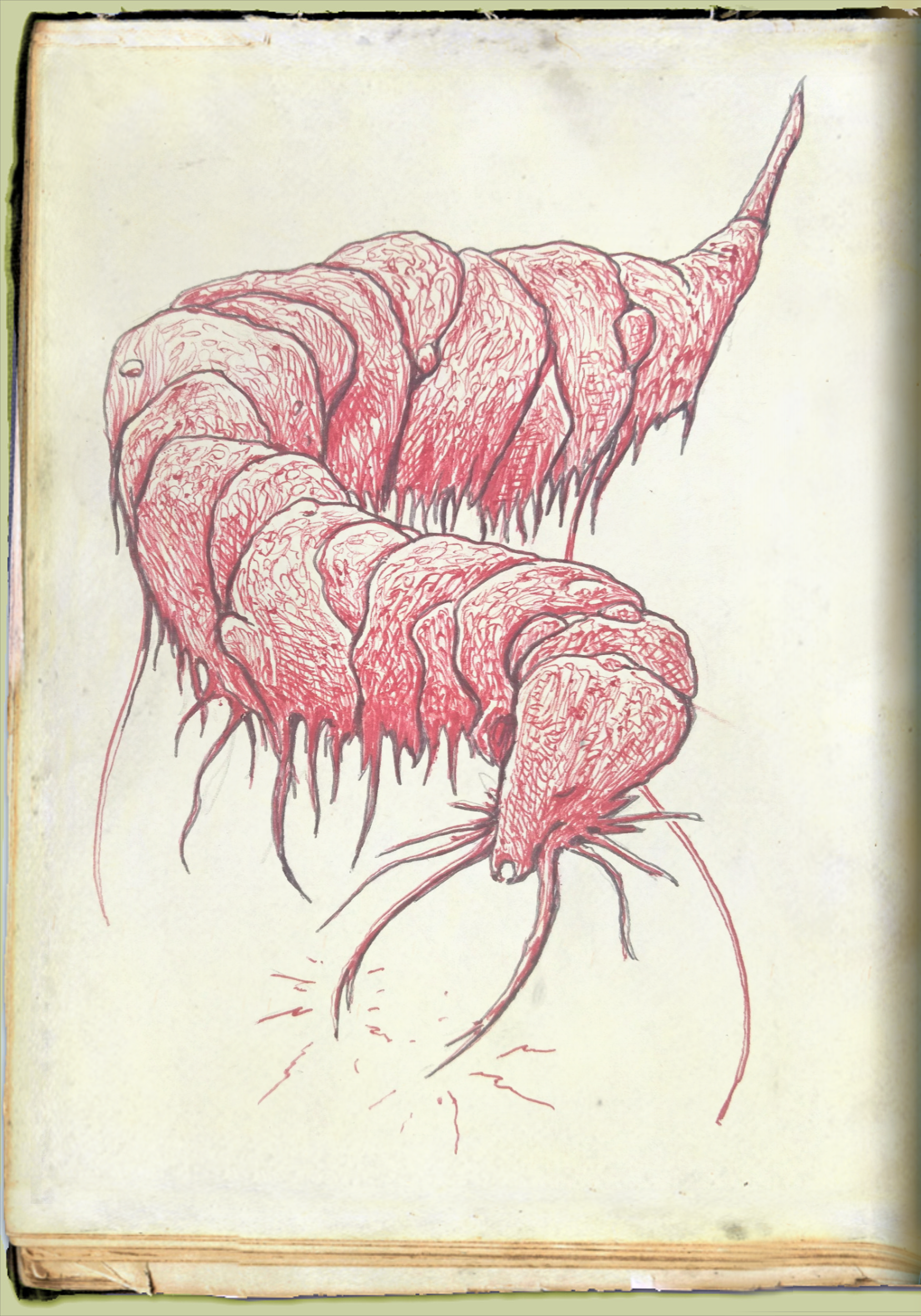
Lightning Eel
Lighting eels kill with electric discharges. Though dangerous at night, if detected they can easily be scared off by means of a long spear wielded by a non-critical expedition member.
hydroskeletal creatures
This branch contains mostly sea-creatures and worms. Worms can vary from hundred meter long swamp monsters to multilimbed starfish-like creatures, floating jellyfish, all sorts of pseudo-flowers and cannibalistic urchins. Two species are sentient.
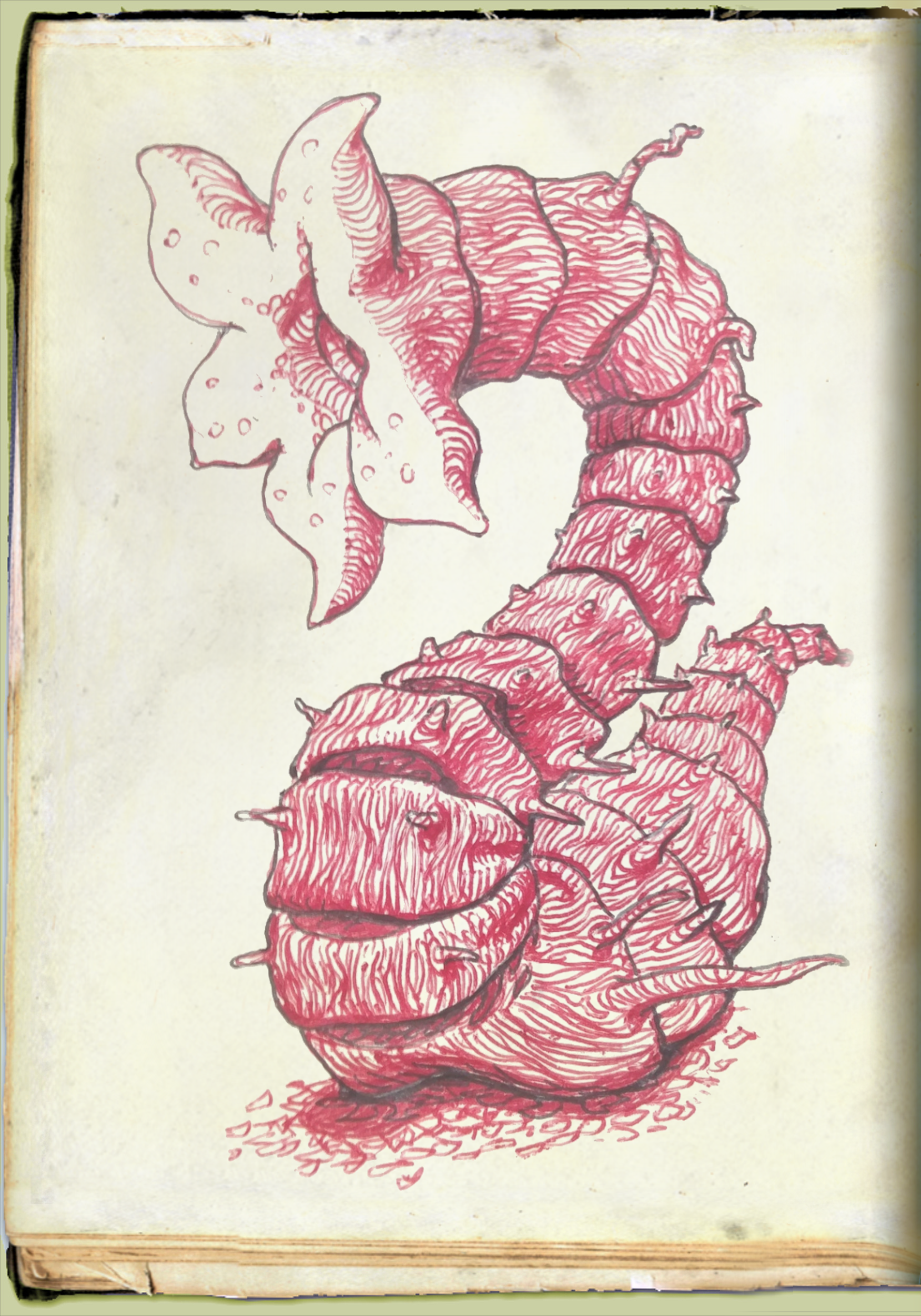
Hydroskeletal 1
Starworms have no teeth. Vulnerable at the gaps in their exoskeleton, they could probably be killed and cut open fast enough for victims to merely suffer bruising, broken bones, extensive skin abrasion and acid burns. Most victims, alas, are swallowed head first and found suffocated.<

Hydroskeletal 2
to come.
Mollusks
Mollusks are as common on land as in sea, both in snail, shell, or octopus form. But only a sea-based species has gained sentience.
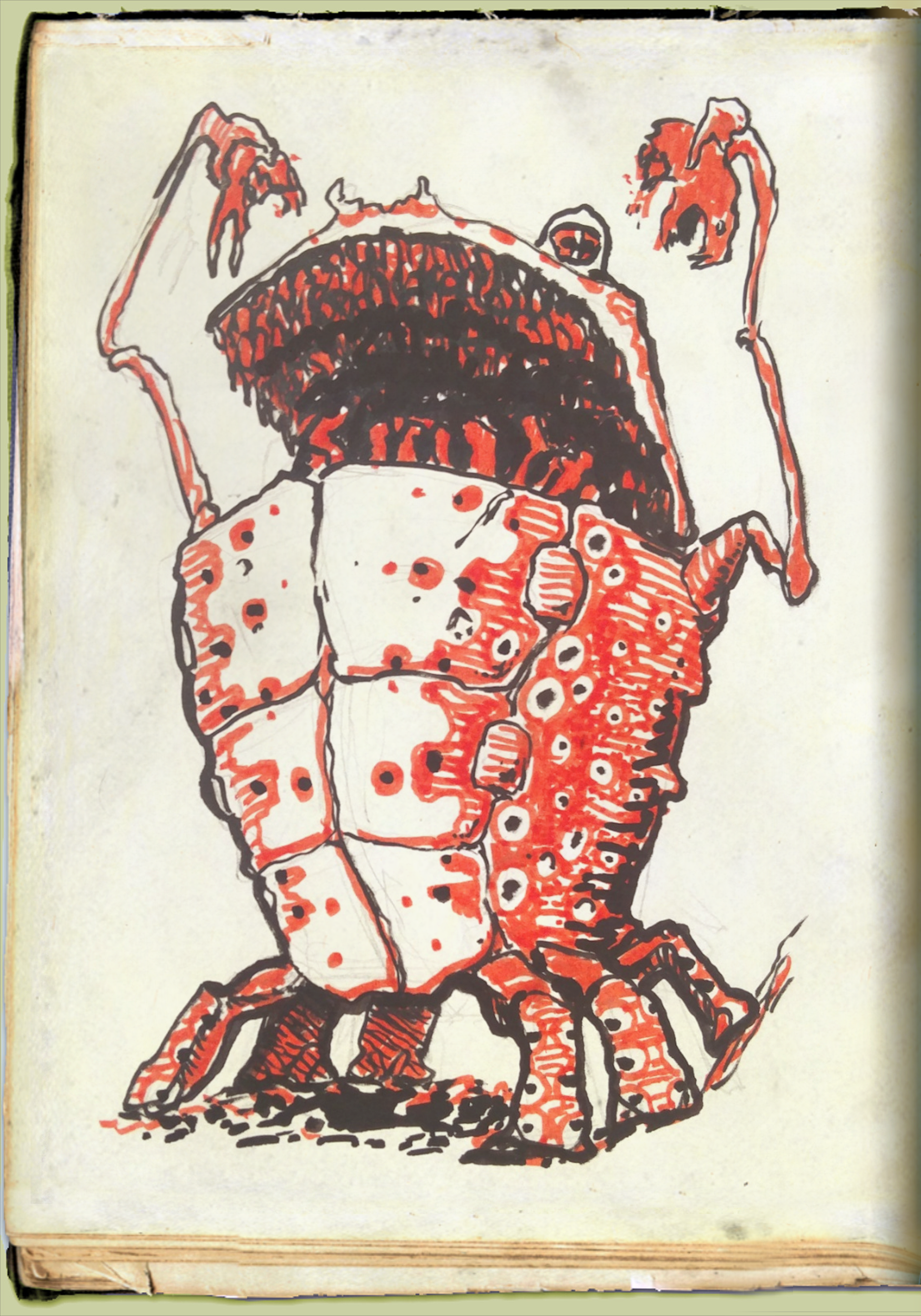
Towering Bassoon
Towering Bassoons are easily stumbled into by accident. Their front shells open up to embrace whole trees that are then shredded by thousands of pincers in their anterior cavity. This proces may take days, and is only partly for feeding. Their size forces bassoons keep their territory clean of obstacles. Their long pincers are used to snip away smaller plants, or pick up morsels of protein to drop in past the hinged top shell.

Etcher
Etchers are named after the grooves they cut into their own armor. It is thought these allow for expansion as the Etcher grows. It is thought Etchers are intelligent, communicating through a clattering language. Etchers Theories based on distant observance abound. Closer investigation inevitably ends in dismemberment and consumption.
Beasts (mammals)
Warmblooded, hairy and strong, mammals are still rare, likely because they were only created late in the history of Crescent. It is rumored mammals are based on Daemen. Two species are sentient.
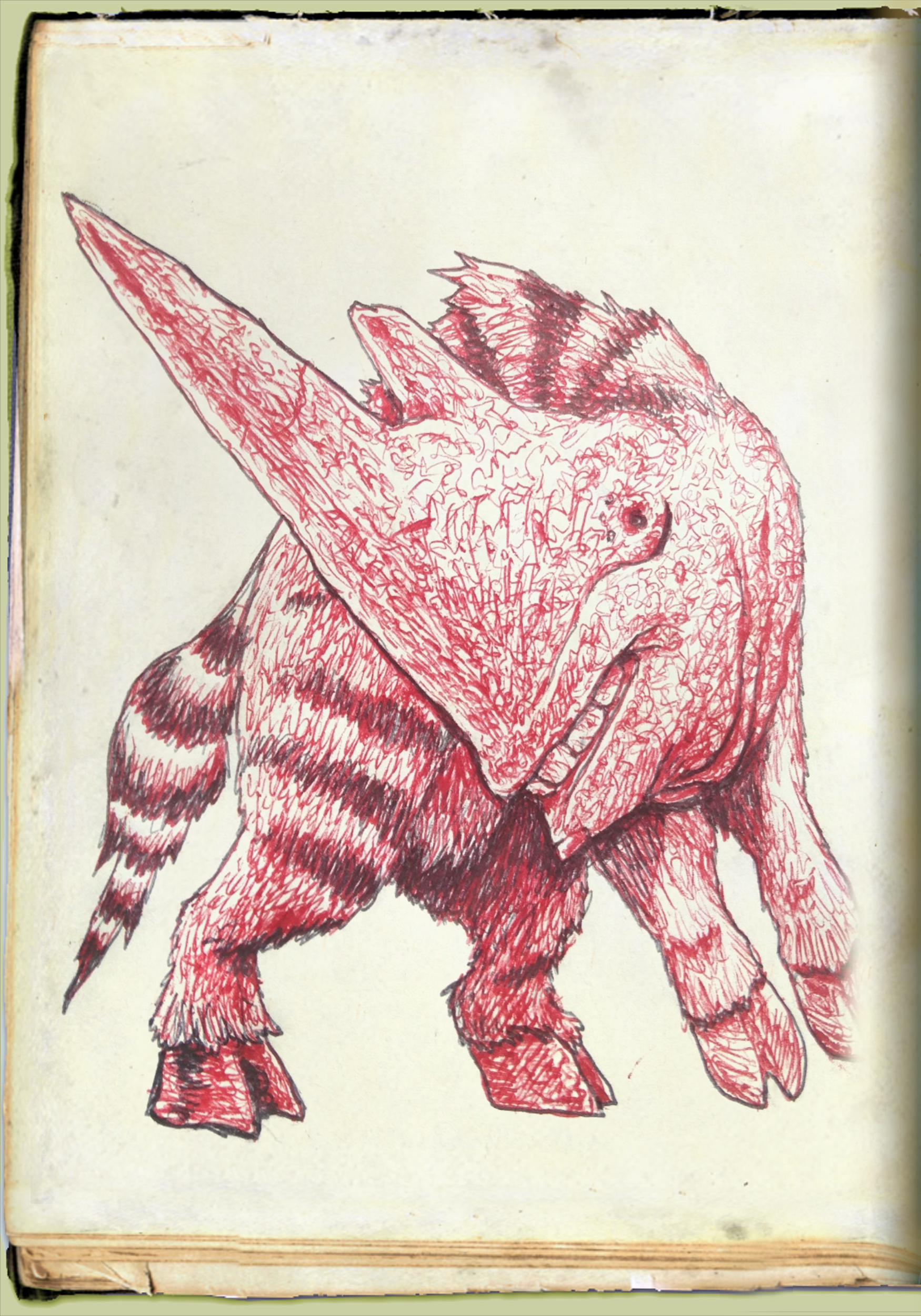
To Come
A stampeder is curious, playful, gentle but rarely
alone. 500 stampeders
are not very playful. Most stampeder packs are thought to circle, living off fungi that sprout on the remains of animals trampled on their last pass. Fresh remains tend to attract carnivores. Stampeders themselves attract only flying parasites, bloodsuckers with colourful ringed tails.

To Come
to come.
Saurs
Saurs range from leather-skinned amphibians to feathered avians. They can be found in any Crescent environment, in all shapes, often as large herbivores. But they are most dangerous as scaled and feathered flightless giant carnivores. Two species are sentient bipedals.
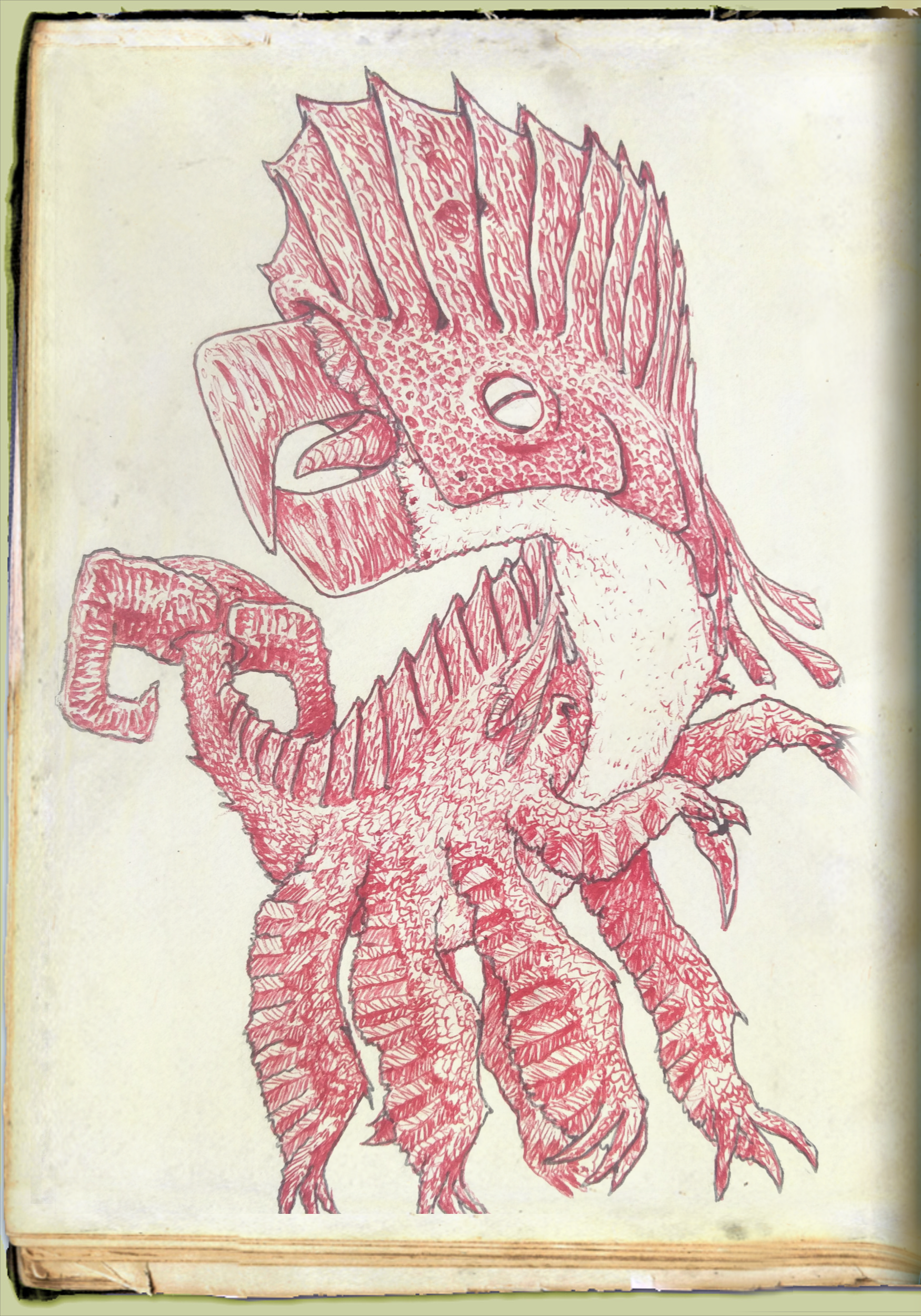
Hookbeast
Hookbeasts prey on large mollusks such as Bassoons. Their beak pierces the thickest shell, and their tail hooks onto trees. Their skeleton them is strong enough for the mollusk to tire itself out. A piercing, hard tongue then drinks the mollusk's juices. Hookbeasts are highly intelligent and like picking off expedition members one by one.
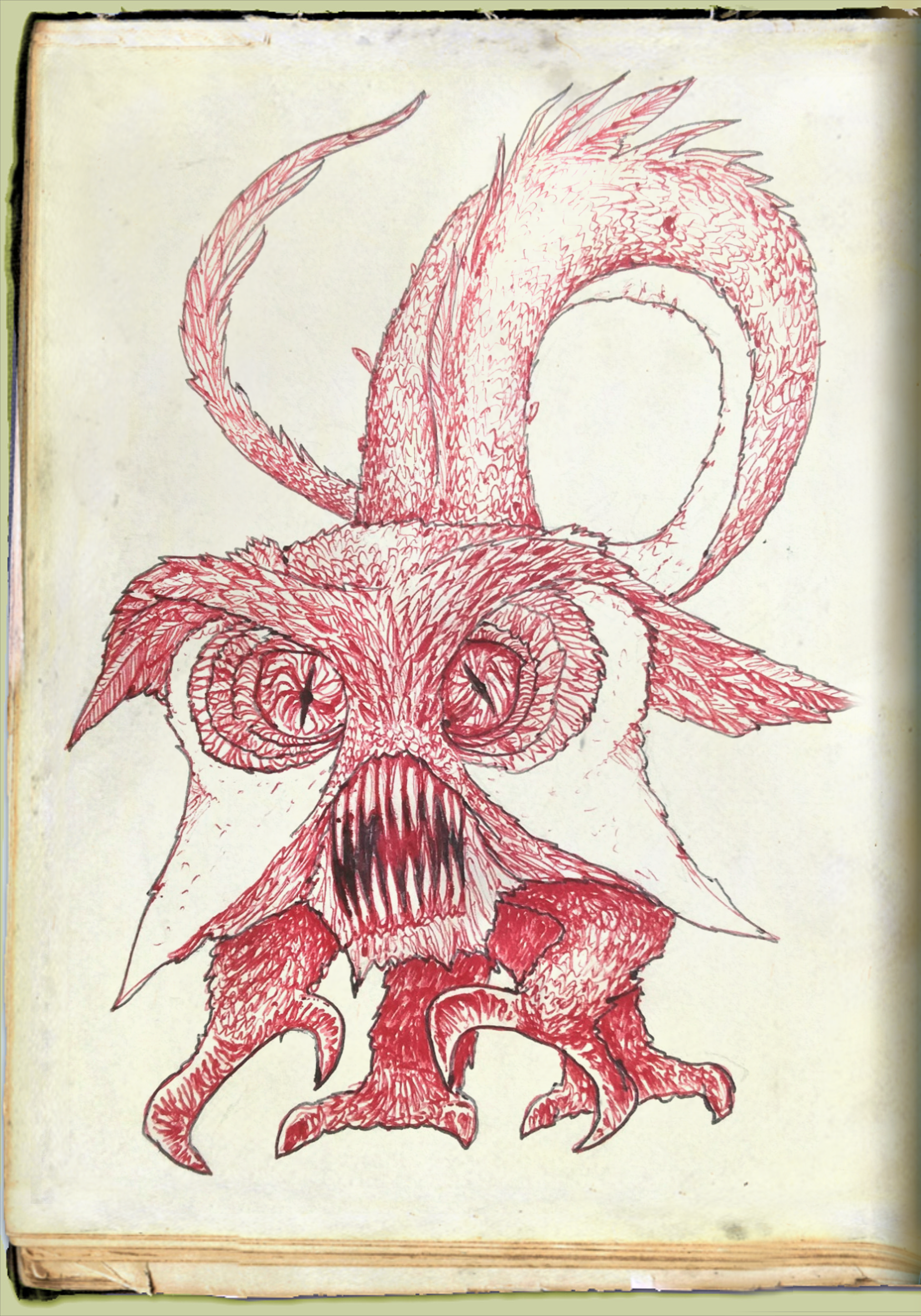
Feathered Owlsnake
Feathered Owlsnakes are lazy nocturnal ambush hunters. Many an expedition member has gone away from the fires to relieve themselves, to end up relieved of their guts. Owlsnakes are however frightened by fire and light, and vulnerable to a punch in their fragile, needle like teeth. Their long bodies are mostly slow digestive systems.
Glass creatures (silicate)
Most glass creatures are insectoid limited in size by their lack of lungs. But there are some species that have taken larger forms, mostly through the use of magic. Of these two are sentient bipedals.
Milk creatures (organoaluminum)
Milk creatures are often massive and spiderlike, named after their rounded, milky white carapaces. They prefer jungles to open land. Nimbler species can be found everywhere. Allmost all milk creatures excrete poisons, acids, and glues.
Milk creatures (organoaluminum)
Milk creatures are often massive and spiderlike, named after their rounded, milky white carapaces. They prefer jungles to open land. Nimbler species can be found everywhere. Allmost all milk creatures excrete poisons, acids, and glues.

Mouth
Many monsters have impressive mouth to body ratio. Of these, the 'Mouth' has the most basic name because their speed gives no time to shout out a longer name in warning.
One bite is usually all it takes. However, Mouths are vulnerable to crushing blows with hammers and the like.

Milk 2
to come.
Magic creatures
Magic creatures are survivors. Immortal but often set to hard duties, only the toughest remain from the different eras where they were fabricated. They often withdraw from civilisation, but may join groups when pursuing their own long term obsessions. Being inedible helps them survive Crescent's nature.
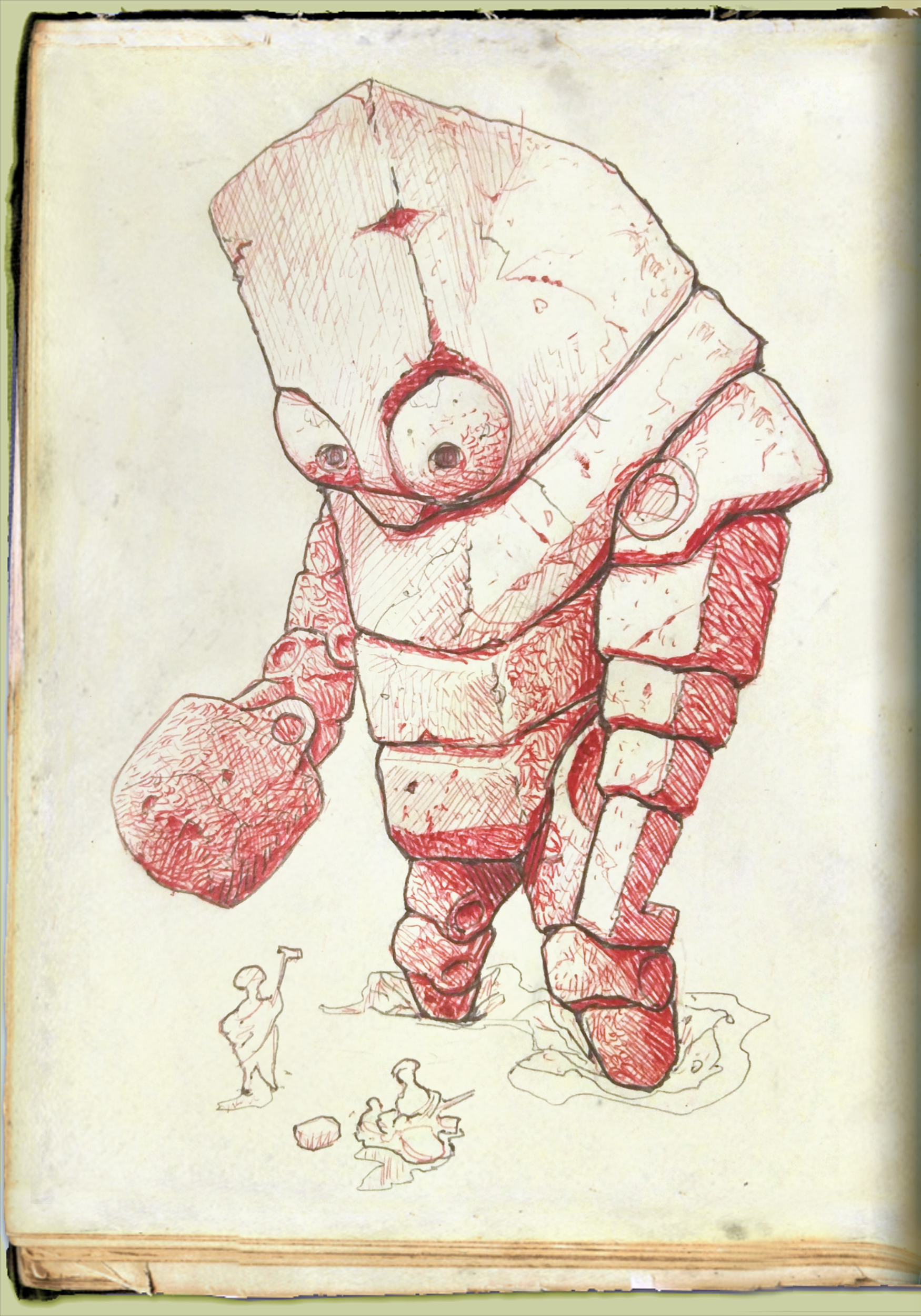
Gargant
Gargants were created for siege warfare. These stone Golems tend to the extremely large, slow and easily insulted. This offers an effective way to enlarge existing paths through the jungle. However lumbering they may be, an expedition drawing along a Gargant in this way is advised not to pause for naps.
Plants
Crescent plants do not sit still. They snatch, strange, spear, dart, clobber and otherwise kill. Some of this is defensive, but many species use rotting kill to enrich the soil, or digest victims themselves.
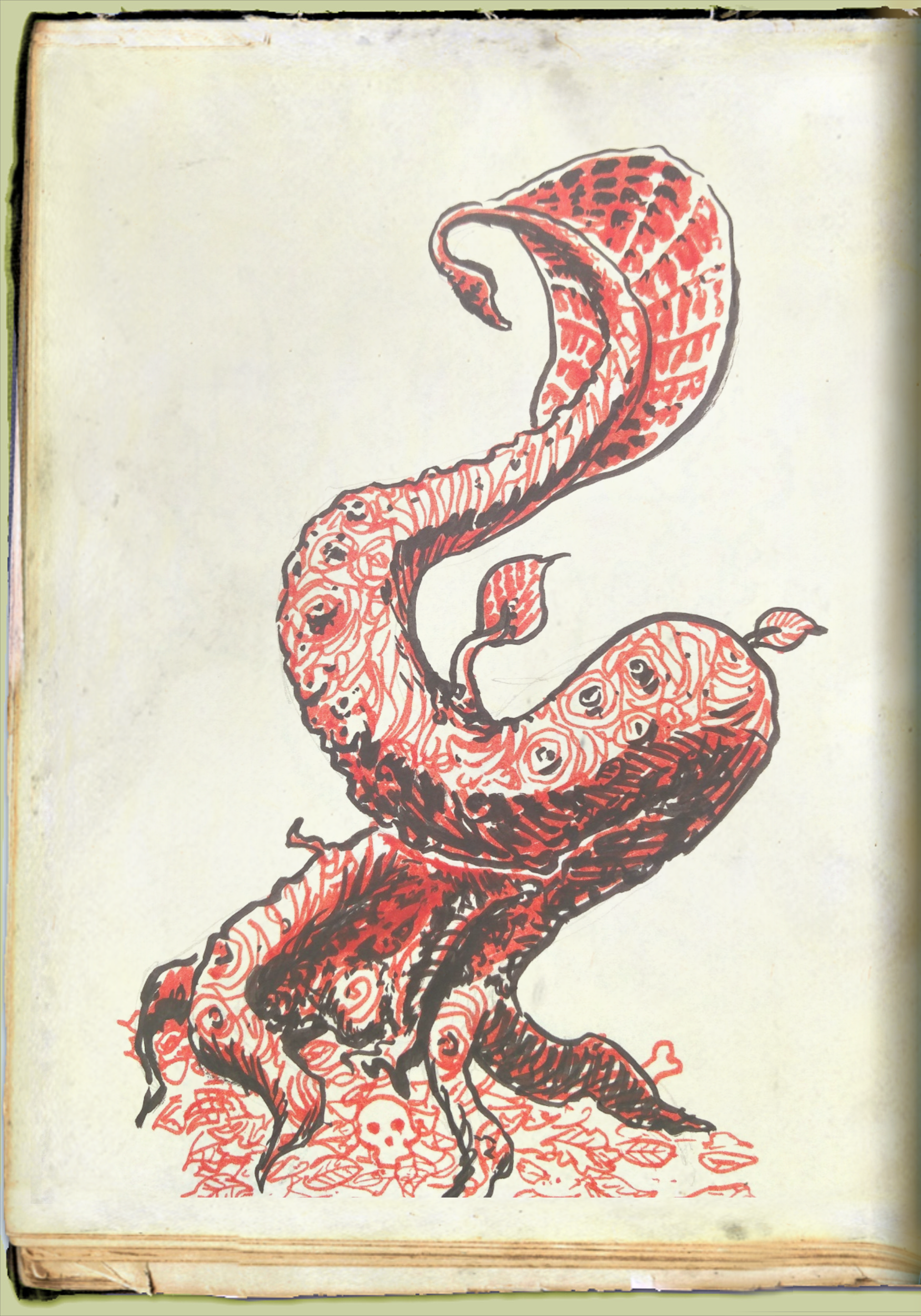
Stingercowl
Stingercowls coil to wrap themselves around any victim that brushes their poisonous stinger. The stinger also poisons the victims, whose trashing will crack chitin, milk and glass shells. Pores in the supple stem will then drink blood and other juices. Parasites will soon arrive to drag away the remains.

Pincer Trap
Pincer Traps pince, thereby trapping. The victim is then drawn in closer to the stem, with more and more pincers pincing. The shredded remains rot amongst the leaves at the root. Brightly coloured seed husks grown on stalks so that the pincers do not interfere with the process of spreading seeds.
Pincers grow in hedge formation to ensnare the most victims, and the waving seed husks are a cheerful sight.
Fungi
Though significantly less mobile than plants, fungi are the more dangerous flora. From toxic spores over exploding fruit bodies to rotting traps, fungi kill to exploit their metobolic ease with proteins. If you breathe, you're likely on some fungi's menu. And once you stop breathing you'll be the main course for many fungi indeed.















